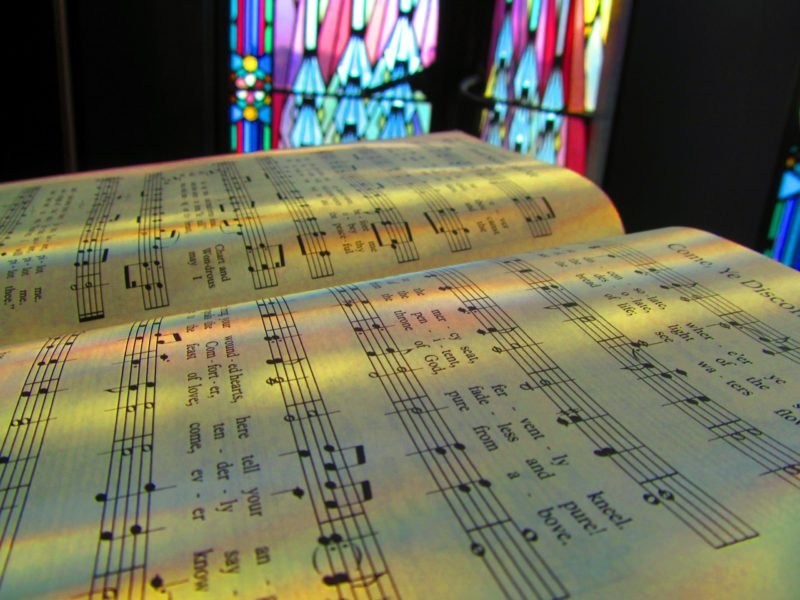One of the pandemic’s most ravaging larcenies is depriving us of shared musical experiences, and not in some furtive, pilfering manner either. From concerts to live theater, from choirs to festivals, from hymn sing to children’s’ holiday performances, it seems COVID’s singular objective is to deprive us wholesale of moments which help make us truly human. The music of the holiday season is best sung to my mind, and not simply heard. As I began greening our home, Transfiguration’s parish rectory, I put on a beloved Kathy Mattea Advent/Christmas CD, singing and weeping simultaneously. More on that later. Some of the church’s best theology is not written or recited, but rather sung, and one of Advent’s gatekeeper hymns distinctive to Anglican hymnody beautifully captures Advent’s audacious claims. Before we reflect on it, take a moment to listen to listen to it, Anglican-style, here. (Yes, I know there are YouTube clips of the Mormons and our Washington National Cathedral singing this also, but I so much prefer hymnal music in it’s native setting whenever possible! Look for the young English girl wedged in the middle of her pew giving this hymn all she’s got about mid-way through, more uplifting to me than Tabernacle finery one hundredfold.)

The hymn is properly titled Come, Ye Faithful People Come. 19th century Anglican parish cleric Henry Alford composed the lyrics in 1844, but revised the words in 1865 and again in 1867. For me, his lifelong engagement with this hymn betrays his passion to see Come give voice to the deep wisdom of Anglican theology struggling to hold her moderate foundation against more evangelically extreme theological undertow. When a memorable tune (Saint George’s, Windsor by George J. Elvey) paired so perfectly with Alford’s lyrics, the hymn sprang to life as a
beloved Thanksgiving classic. But don’t be deceived by musical sentiment dear readers! Alford’s text is a theological masterwork of parable, seamlessly conjoining a simple harvest context with themes of personal spiritual growth towards a Christ-like nature and the return of Christ at the end of days. This piece does not simply mark a national holiday or fall harvest theme, but invites us smartly into Advent-time! We are God’s harvest, we contain both wheat and tares (or more commonly, those pesky weeds which grow symbiotically with the desired wheat) within ourselves, we encompass both joy and sorrow in this mortal life, all the while being transformed into “wholesome grain and pure may be!” We are headed towards God’s garner, an absolutely wonderful old English word meaning accruing with effort over time. Does it comfort you as much as it does me to know God’s plan is to gather me after sustained divine effort over time?! Finally, the 4th verse carries a mystery: Alford’s original first line read “Then thou Church Triumphant Come,” a 19th century English conceit I think. The line in Hymns Ancient and Modern reads “Come then Lord of Mercy Come,” a softening of Alford’s victorious crescendo. But the 1940 and 1982 Hymnals of our American Episcopal Church contains yet another revision, a significant one: “Even so, Lord, quickly come.” I don’t know precisely who or when, but this classic hymnic line transformed coming across the Atlantic into a intercessory prayer to speed the end of days. The1979 Book of Common Prayer asks us to confess “Christ will come again,” but this hymn’s evolution invites us to move from victory to petition. Whatever the end of days entails, O Lord, we are intended for glorious garner. Even so, Lord….
- Isn’t it nice to listen to a beloved hymn and reflect together upon it’s innate profundity? Isn’t it even even better to sing it with reckless abandon when no one’s around? Vehicle, kitchen, shower, wherever….no virus can thieve our music! I challenge you to search for, find, listen to and sing gustily along with your favorite Advent and Christmas musical treasures!
- Advent prepares us simultaneously for both the first and second comings of our Lord. While Christmas is the more familiar, Come reminds us that God’s Consummation is just as significant, obviously, as is God’s Incarnation. This one hymn was so paradigmatic in reminding the English church of this fact that no less an Anglican luminary than C.S. Lewis referenced Come in his Narnian legendarium (The Magician’s Nephew, 1955)! Have you ever sat in prayer and pondered the End of Days? Would you consider using this hymn as a prayerful guide of reflection upon that future gathering of all time, space and reality?
- As you do, if you do, please do not miss the robust pastoral dimension of Alford’s text. In what ways are we growing, right now, into wholesome grain? Where is my wheat growing, first the blades and then the ear, into visible witness of Christ in my everyday life? Where are my tares, sticky and life-draining, being gathered for divine conflagration, this Advent? Can we pray together to be freed from sorrow and freed from sin?!